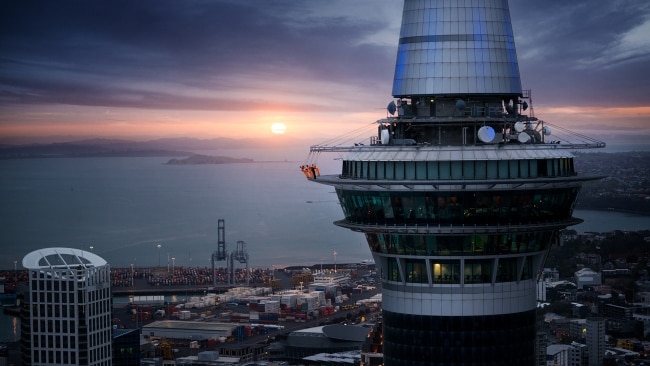Out of the blue-green gloom at Ningaloo Reef
UNFORGETTABLE encounters with whale sharks at Ningaloo Reef.

PREPARING to swim with whale sharks off the West Australian coast is a lot like waiting for a bus. The divemaster's right arm points skywards, as if hailing something, while we snorkellers queue to her left as neatly as possible in the rolling deep of the Indian Ocean.
With masks on and heads submerged, a huge, spotted charabanc soon looms from the blue-green gloom. At first there's just a mailbox mouth in a broad head drifting ever closer until a 6m mass fills our field of vision. Some passengers - baby trevally, remoras and slender suckerfish - are already on board; we kick flippers and try to swim alongside the slow-moving mass.
The first few times we enter the ocean on whale shark watch, I well and truly miss the bus and spend my time pursuing a disappearing tail. But on the last dive I luck out with a prime viewing spot midway along the polka-dot flank of a young male and manage to stay there, gliding beside my massive mate, for a minute or two. It's long enough to appreciate the designer dots and stripes that decorate the whale shark's skin and to marvel that the world's largest fish is so accessible to curious humans.
The calmness of the encounter is what stays with me. This is a shark, it is the size of a small whale, and yet it is not terrifying in the slightest.
It is graceful and a wonder to watch.
Ningaloo is remarkable. The 260km fringing reef is the seasonal home of manta rays, humpback whales and the world's biggest fish and its biggest animal, the blue whale. Permanent residents include hundreds of tropical fish species and corals, and three types of turtles. When not busy stalking whale sharks, I see my first dugong in the wild and enjoy a magical four-minute swim with a friendly green turtle off Turquoise Beach.
The Ningaloo Coast World Heritage Area has been the inspiration for a project to track, observe and conserve whale sharks. Founded in 1999 by Perth-born marine biologist Brad Norman, the Ecocean program uses photography as a conservation tool, encouraging thousands of visitors who come to Ningaloo each year, and many more at whale shark hotspots around the world, to upload field photos to a central archive at whaleshark.org.
More than 47,000 photographs have been logged by "citizen scientists", as Norman calls them, in this dynamic global collaboration. The Ecocean archive now has data from 54 countries as amateur researchers submit whale shark shots from as far afield as Mexico and Mozambique.
Norman's research since 1994 has established that each creature's distinctive spots and stripes are unique and can be used as a sort of selachian fingerprint for identification. Analysis of the markings on submitted photos using modified NASA astronomy software has determined, for example, that there are at least 180 distinct animals at Ningaloo Reef. Yet very little is known about the breeding and migratory habits of this creature, which was first documented in 1828.
Norman and his team of volunteers did a tagging test on the fish last year that yielded "excellent data". This year he is busy raising funds for 10 satellite tags to expand the remote tracking experiment and, hopefully, discover more about their migration habits.
"To swim with the biggest fish in the ocean is unique," Norman says. "It's [also] a chance to show that whale shark ecotourism can equal whale shark conservation. If you can spark people's interest in whale sharks, hopefully you can encourage them to get interested in the habitat they live in."
Kendall Hill was a guest of travel.com.au.
Checklist
The official season is April-July, but the whale sharks usually linger off the Exmouth coast from mid-February until mid-October. More: 1300 130 485; whaleshark.org; ningalooblue.com.au.


